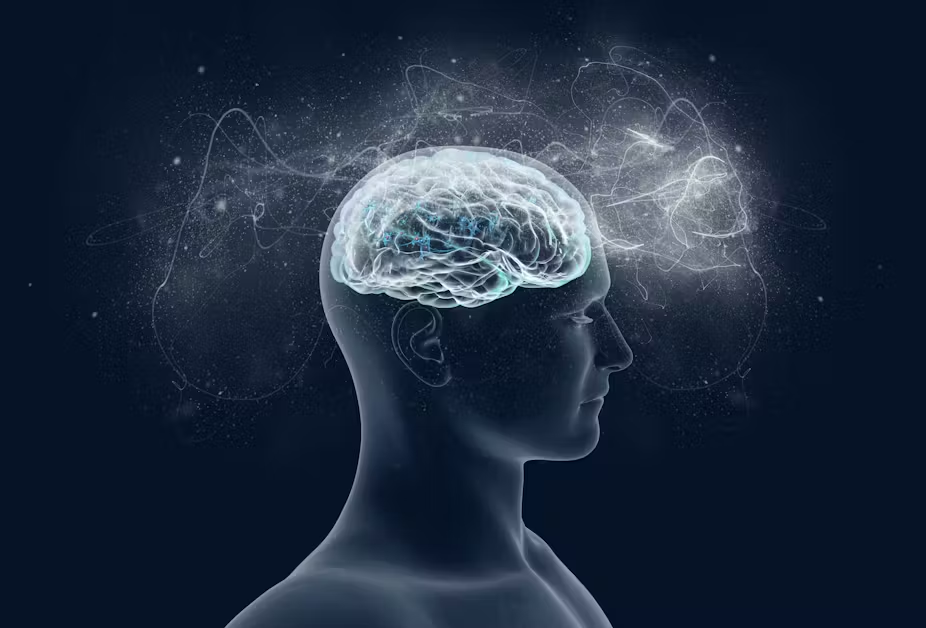The Essence of Alevemente:
Alevemente embodies the practice of mindfulness, emphasizing living in the present moment with full awareness. It is a pathway to achieving a balanced and fulfilling life through conscious attention and intentionality.

By practicing Alevemente, individuals can cultivate a deeper sense of connection with themselves and the world around them.
Why Mindfulness Matters:
Mindfulness matters because it fosters a deeper connection with ourselves and the world around us. In a fast-paced world filled with constant distractions, mindfulness offers a sanctuary of peace and clarity.
Practicing mindfulness enhances our mental clarity, emotional stability, and overall well-being, allowing us to navigate life’s challenges with greater ease and resilience.
Understanding Alevemente:
Definition and Origins:
Alevemente is derived from ancient mindfulness practices rooted in Buddhist traditions. The term combines “aleve,” meaning to alleviate or ease, and “mente,” the Spanish word for mind, symbolizing the relief and clarity brought to the mind through mindfulness.
It has evolved into a modern approach to mental health, focusing on awareness and acceptance. By integrating these ancient practices with contemporary insights, Alevemente provides a holistic framework for personal growth and well-being.
Core Principles:
The core principles of Alevemente include attention, intention, and attitude. Attention involves focusing on the present moment, fully engaging with our current experience. Intention refers to the purpose behind our mindfulness practice, guiding our efforts and keeping us motivated.
Attitude encompasses the qualities of curiosity, openness, and acceptance, which are essential for a compassionate and non-judgmental approach to ourselves and others.
Read Also:Www.topicsolutions.net – Discover the Ultimate Gaming and Tech Hub!
The Science Behind Mindfulness:
How Mindfulness Affects the Brain:
Mindfulness has been shown to alter brain structure and function significantly. Regular practice can increase gray matter in brain regions involved in memory, learning, and emotional regulation.
Functional MRI studies reveal that mindfulness strengthens connections between the prefrontal cortex and the amygdala, enhancing our ability to regulate emotions and respond to stress more effectively.
Benefits Backed by Research:
Research supports numerous benefits of mindfulness, including reduced stress, enhanced focus, improved emotional regulation, and better overall mental health.
Studies have shown that mindfulness can lower cortisol levels, decrease symptoms of anxiety and depression, and improve cognitive functions such as attention, memory, and problem-solving skills.
The Path to Inner Peace:
What is Inner Peace?
Anxiety, tension, or concern are absent from a condition of mental and emotional stillness known as inner peace. It’s achieved through self-awareness and self-acceptance. Inner peace is not about escaping reality but embracing it fully, allowing us to navigate life’s ups and downs with equanimity and grace.
How Mindfulness Contributes to Inner Peace?
Mindfulness helps achieve inner peace by promoting relaxation and reducing negative thought patterns. It fosters a sense of grounding and presence, allowing us to detach from the chaos of our thoughts and emotions.
By cultivating mindfulness, we learn to observe our experiences without judgment, leading to a deeper sense of acceptance and tranquility.
Starting Your Mindfulness Journey:
Setting Intentions:
Setting clear intentions is crucial for a successful mindfulness practice. Intentions guide your focus and keep you motivated. Start by reflecting on why you want to practice mindfulness and what you hope to achieve. Your intentions should be specific, realistic, and aligned with your values and goals.
Creating a Mindful Environment:
A mindful environment is quiet, comfortable, and free from distractions. It supports your practice and enhances your ability to focus. Consider creating a dedicated space for mindfulness, incorporating elements such as soft lighting, calming scents, and comfortable seating to make your environment conducive to relaxation and introspection.
Read Also:Technology Giants Control The Global Security – Cybersecurity Threats!
Mindfulness Practices:
Meditation Techniques:
Different meditation techniques include focused attention, open monitoring, and loving-kindness meditation. Each offers unique benefits and can be adapted to suit your needs and preferences.
Focused attention involves concentrating on a single point of focus, such as the breath, while open monitoring involves observing thoughts and sensations without attachment.
Loving-kindness meditation involves generating feelings of compassion and goodwill towards oneself and others.
Breathing Exercises:
Breathing exercises, such as deep belly breathing and the 4-7-8 technique, help calm the mind and reduce stress. Deep belly breathing involves inhaling deeply through the nose, allowing the diaphragm to expand fully, and exhaling slowly through the mouth.
The 4-7-8 technique involves inhaling for four counts, holding the breath for seven counts, and exhaling for eight counts, promoting relaxation and reducing anxiety.
Body Scan Meditation:
Body scan meditation involves paying attention to different parts of your body, promoting relaxation and body awareness. Start from the top of your head and gradually move down to your toes, noticing any sensations, tension, or discomfort. This practice helps you connect with your body, release tension, and cultivate a sense of inner calm.
Integrating Mindfulness into Daily Life:

Mindful Eating:
Mindful eating involves savoring each bite, paying attention to flavors, textures, and sensations, which can improve digestion and enjoyment of food. It encourages a deeper connection with our food, fostering gratitude and awareness of the nourishment we receive.
Mindful Walking:
Mindful walking is about being fully present with each step, noticing the sensations in your feet and the environment around you. It’s a simple yet powerful way to integrate mindfulness into your daily routine, enhancing your connection with your body and the natural world.
Mindful Communication:
Mindful communication involves active listening and thoughtful speaking, enhancing your interactions and relationships. It encourages being fully present during conversations, listening without judgment, and responding with empathy and clarity. This practice fosters deeper connections and more meaningful interactions.
Overcoming Challenges in Mindfulness:
Common Obstacles:
Common obstacles include distractions, impatience, and self-judgment. Recognizing these challenges is the first step to overcoming them. It’s important to approach mindfulness with a compassionate and non-judgmental attitude, acknowledging that setbacks are a natural part of the process.
Tips for Staying Consistent:
Staying consistent involves setting a regular practice schedule, starting small, and gradually increasing your mindfulness activities. Incorporate mindfulness into your daily routine by setting aside specific times for practice, using reminders, and finding accountability through mindfulness groups or partners.
Mindfulness for Stress Management:
Techniques to Reduce Stress:
Techniques such as progressive muscle relaxation, visualization, and mindful breathing can significantly reduce stress. Progressive muscle relaxation involves tensing and relaxing different muscle groups, while visualization involves imagining a peaceful scene to promote relaxation. Mindful breathing helps anchor your attention and calm the mind.
Real-Life Success Stories:
Many people have transformed their lives through mindfulness, reporting improved mental health, better relationships, and enhanced well-being. These success stories highlight the profound impact of mindfulness on various aspects of life, providing inspiration and motivation for your own practice.
Read Also:What The Heckin Dog – Exploring the Humor and Cultural Impact!
Enhancing Emotional Well-being:
Managing Emotions with Mindfulness:
Mindfulness helps manage emotions by fostering awareness and acceptance, reducing reactivity to emotional triggers. By observing our emotions without judgment, we can respond to them more skillfully and cultivate a balanced emotional state.
Building Emotional Resilience:
Courage after hardship is a measure of mental health. Mindfulness strengthens this resilience by promoting a balanced perspective and enhancing our ability to cope with stress and challenges.
Regular practice can improve our emotional regulation, helping us navigate life’s difficulties with greater ease.
Mindfulness and Relationships:
Improving Connections:
Mindfulness improves connections by enhancing empathy, patience, and understanding in relationships. It encourages being fully present with others, fostering deeper and more meaningful interactions. By practicing mindfulness, we can build stronger, more compassionate relationships.
Mindful Listening and Speaking:
Mindful listening involves fully concentrating on the speaker without judgment. Mindful speaking focuses on clear, kind, and intentional communication. These practices enhance our interactions, promoting understanding, trust, and connection.
Advanced Mindfulness Practices:
Loving-Kindness Meditation:
Loving-kindness meditation involves sending positive thoughts and feelings to yourself and others, fostering compassion and kindness. This practice can enhance emotional well-being, reduce negative emotions, and promote a sense of connectedness.
Gratitude Practices:
Gratitude practices, such as keeping a gratitude journal, can enhance your overall sense of happiness and well-being. By regularly reflecting on the things you are grateful for, you can shift your focus from negative to positive aspects of life, fostering a more optimistic and appreciative outlook.
Mindfulness for Personal Growth:
Setting Mindful Goals:
Setting mindful goals involves aligning your objectives with your values and focusing on the process rather than the outcome. This approach encourages a sense of purpose and direction while fostering a non-judgmental and compassionate attitude towards yourself.
Reflective Journaling:
Reflective journaling helps track your mindfulness journey, providing insights and fostering personal growth. By regularly writing about your experiences, thoughts, and feelings, you can gain a deeper understanding of yourself and your mindfulness practice.
The Role of Mindfulness in Modern Life:

Balancing Technology and Mindfulness:
Balancing technology and mindfulness involves setting boundaries with devices and incorporating mindful breaks throughout the day. By creating tech-free zones and practicing digital detoxes, you can reduce the negative impact of technology on your well-being and enhance your mindfulness practice.
Mindfulness in the Workplace:
Mindfulness in the workplace can improve productivity, reduce stress, and foster a positive work environment. Incorporating mindfulness practices, such as mindful breathing, meditation, and mindful communication, can enhance focus, creativity, and collaboration among employees.
Embrace Alevemente to cultivate a mindful, balanced, and fulfilling life. Start your journey today to discover the transformative power of mindfulness, and experience the profound impact it can have on your overall well-being and personal growth.
FAQ’s:
1. What is Alevemente?
Alevemente is a mindfulness practice focusing on living in the present moment with awareness, combining ancient Buddhist traditions with modern mental health insights.
2. How does mindfulness affect the brain?
Mindfulness increases gray matter in brain regions related to memory and emotional regulation and strengthens connections between the prefrontal cortex and the amygdala.
3. What are the core principles of Alevemente?
The core principles are attention, intention, and attitude, focusing on the present, guiding the practice’s purpose, and maintaining curiosity, openness, and acceptance.
4. How can mindfulness help achieve inner peace?
Mindfulness promotes relaxation and reduces negative thought patterns, fostering acceptance and tranquility by observing experiences without judgment.
5. What are some mindfulness practices for beginners?
Beginners can start with meditation techniques, breathing exercises, body scan meditation, mindful eating, walking, and communication.
Conclusion:
Embrace Alevemente to cultivate a mindful, balanced, and fulfilling life. By practicing mindfulness, individuals can enhance their mental clarity, emotional stability, and overall well-being. Start your journey today to discover the transformative power of mindfulness and experience its profound impact on personal growth and well-being.
Read Also:



